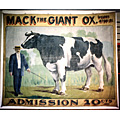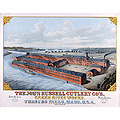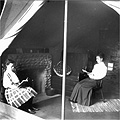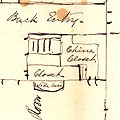
For the first time, more Americans lived in cities than on farms in the countryside. Urban landscapes and industries competed with the old agrarian lifestyle and culture. Even in rural areas, factories and their employees transformed the landscape and the local economy. A revolution in transportation technology enabled farmers in the Midwest to compete with their Northeastern counterparts. Farmers in New England responded by exploiting new markets to survive new competition. Social costs and tensions accompanied these economic and industrial developments. The home and the domestic circle became, for many Americans, a haven from the problems of public and working life. An increasing emphasis on privacy within the home itself provided individual family members more personal space and privacy. Meanwhile, new organizations and new public buildings fostered a sense of community. At the same time, their existence testified to the growing diversity of the communities they served. More and more Americans turned to the land to escape from the stresses of an increasingly complex society. Camping and other outdoor activities became a way for these people to renew their spiritual and physical health.
1871 Map, Deerfield, Massachusetts
See the Digital Collection for further information.
|










